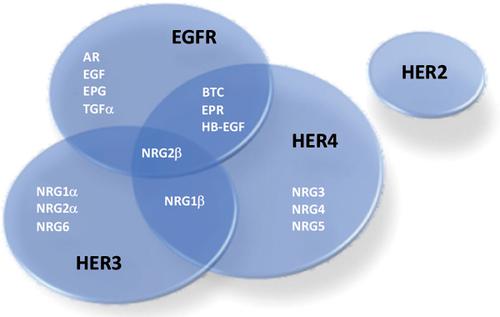Current Topics in Medicinal Chemistry ( IF 3.4 ) Pub Date : 2020-06-30 , DOI: 10.2174/1568026620666200603122726 Sergi Gómez-Ganau 1 , Josefa Castillo 2 , Andrés Cervantes 2 , Jesus Vicente de Julián-Ortiz 3 , Rafael Gozalbes 1

|
Background: The Epidermal Growth Factor Receptor (EGFR) is a transmembrane protein that acts as a receptor of extracellular protein ligands of the epidermal growth factor (EGF/ErbB) family. It has been shown that EGFR is overexpressed by many tumours and correlates with poor prognosis. Therefore, EGFR can be considered as a very interesting therapeutic target for the treatment of a large variety of cancers such as lung, ovarian, endometrial, gastric, bladder and breast cancers, cervical adenocarcinoma, malignant melanoma and glioblastoma.
Methods: We have followed a structure-based virtual screening (SBVS) procedure with a library composed of several commercial collections of chemicals (615,462 compounds in total) and the 3D structure of EGFR obtained from the Protein Data Bank (PDB code: 1M17). The docking results from this campaign were then ranked according to the theoretical binding affinity of these molecules to EGFR, and compared with the binding affinity of erlotinib, a well-known EGFR inhibitor. A total of 23 top-rated commercial compounds displaying potential binding affinities similar or even better than erlotinib were selected for experimental evaluation. In vitro assays in different cell lines were performed. A preliminary test was carried out with a simple and standard quick cell proliferation assay kit, and six compounds showed significant activity when compared to positive control. Then, viability and cell proliferation of these compounds were further tested using a protocol based on propidium iodide (PI) and flow cytometry in HCT116, Caco-2 and H358 cell lines.
Results: The whole six compounds displayed good effects when compared with erlotinib at 30 μM. When reducing the concentration to 10μM, the activity of the 6 compounds depends on the cell line used: the six compounds showed inhibitory activity with HCT116, two compounds showed inhibition with Caco-2, and three compounds showed inhibitory effects with H358. At 2 μM, one compound showed inhibiting effects close to those from erlotinib.
Conclusion: Therefore, these compounds could be considered as potential primary hits, acting as promising starting points to expand the therapeutic options against a wide range of cancers.
中文翻译:

新表皮生长因子受体抑制剂的计算评估和体外验证。
背景:表皮生长因子受体(EGFR)是一种跨膜蛋白,可作为表皮生长因子(EGF / ErbB)家族细胞外蛋白配体的受体。已经显示EGFR在许多肿瘤中过表达并且与不良预后相关。因此,EGFR可以被认为是治疗多种癌症例如肺癌,卵巢癌,子宫内膜癌,胃癌,膀胱癌和乳腺癌,宫颈腺癌,恶性黑素瘤和成胶质细胞瘤的非常有趣的治疗靶标。
方法:我们采用了基于结构的虚拟筛选(SBVS)程序,该程序包含一个由几个商业化学品集合(总共615,462种化合物)和从蛋白质数据库(PDB代码:1M17)获得的EGFR 3D结构组成的库。然后根据这些分子与EGFR的理论结合亲和力对来自该活动的对接结果进行排名,并与众所周知的EGFR抑制剂埃洛替尼的结合亲和力进行比较。总共选择了23种表现出与厄洛替尼相似甚至更好的潜在结合亲和力的顶级商品化合物进行实验评估。在不同细胞系中进行了体外测定。使用简单且标准的快速细胞增殖测定试剂盒进行了初步测试,与阳性对照相比,六种化合物显示出显着的活性。然后,在HCT116,Caco-2和H358细胞系中使用基于碘化丙啶(PI)的方案和流式细胞仪进一步测试了这些化合物的活力和细胞增殖。
结果:与30μM的厄洛替尼相比,全部六个化合物均显示出良好的效果。当将浓度降低至10μM时,这6种化合物的活性取决于所用的细胞系:这6种化合物对HCT116表现出抑制活性,两种化合物对Caco-2表现出抑制作用,而三种化合物对H358表现出抑制作用。在2μM时,一种化合物显示出与厄洛替尼相似的抑制作用。
结论:因此,这些化合物可被视为潜在的主要命中点,可作为有前途的起点,以扩展针对多种癌症的治疗选择。



























 京公网安备 11010802027423号
京公网安备 11010802027423号